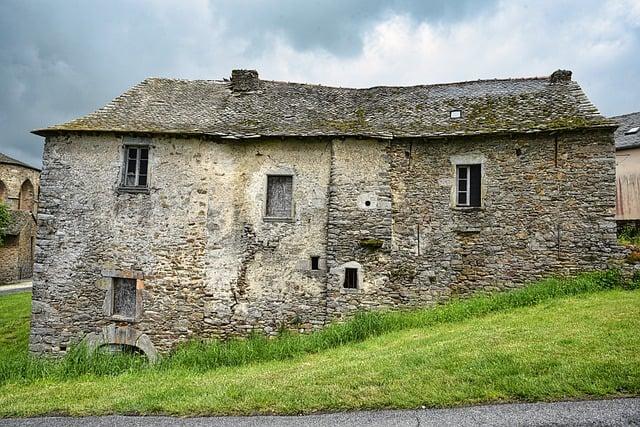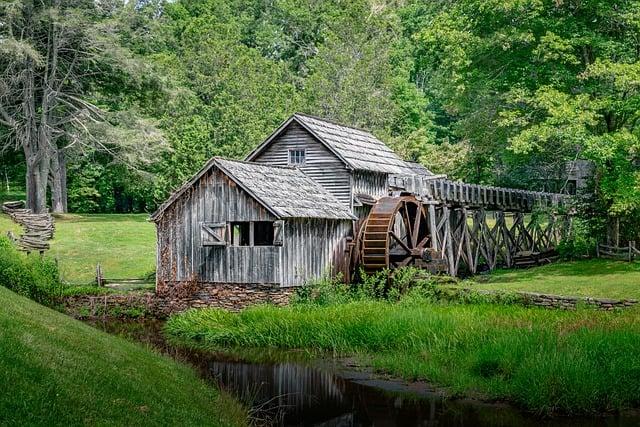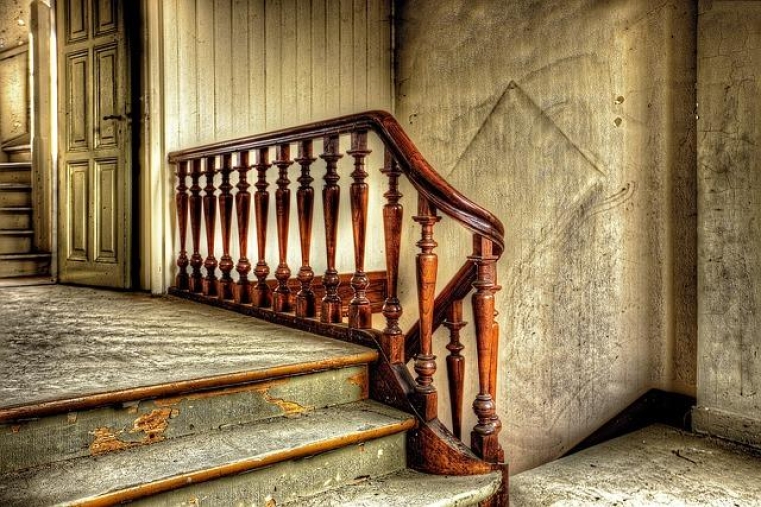Exploring the Allure of Japans Abandoned Homes
In the serene expanse of the Japanese countryside, a hidden world thrives just beyond the ordinary path—a realm that whispers stories of the past through dilapidated structures. Once vibrant homes stand abandoned, enveloped in a gentle embrace of ivy and wildflowers. These mystical “ghost houses” captivate the imagination, inviting exploration and reverence for their forgotten histories.
Each empty room of these houses is laden with traces of former lives. Fraying tatami mats hold the weight of countless moments; faint outlines of furniture reveal where families shared meals and celebrated milestones. In their quietude, these spaces tell a tale that transcends the passage of time, urging visitors to piece together the narratives left behind.
For many, the allure lies not only in the romance of abandonment but also in the potential for renewal. Homebuyers are increasingly drawn to these properties, viewing them as blank canvases waiting to be transformed. With a little vision and effort, dilapidated structures can spring back to life, reimagined as eclectic living spaces or artistic retreats that honor their roots while inviting new stories to unfold.
Exploring these homes often feels like stepping into a time capsule, where echoes of laughter and sorrow seem to linger in the air. Visitors may encounter:
- Faded photographs left behind on dusty shelves
- Handcrafted heirlooms quaintly forgotten
- Worn-out books filled with timeworn wisdom
Despite their decay, these houses have an undeniable beauty that captures the essence of wabi-sabi, the Japanese philosophy that finds harmony in imperfection. Cracked walls, rusted handles, and peeling paint serve as a testament to the passage of time, embodying a sense of nostalgia and poetic melancholy. They remind us of life’s transience, urging us to appreciate each fleeting moment.
The landscapes surrounding these structures add another layer of charm. Nestled amongst verdant fields and gently rolling hills, abandoned homes often boast panoramic views that are breathtakingly tranquil. Nature fiercely reclaims what was once hers, with trees entwining through doorways and the sound of rustling leaves creating a symphony of serenity that soothes the soul.
However, beneath the romanticism of these abandoned spaces lies a deeper, more profound inquiry into the shifting demographics of rural Japan. As urbanization pulls families towards bustling cities, entire villages witness a decline. Abandoned homes symbolize these changes, serving as poignant reminders of what was and what could be again, should new generations choose to return.
venturing into these ghostly dwellings acts as an invitation to reflect and engage with history. What stories remain untold within the walls? What dreams faded with the families that once inhabited them? While exploring the allure of Japan’s abandoned homes, one discovers not just the remnants of the past but also the potential for renewal—a haunting yet hopeful reminder of life’s unending cycle.

Transforming a Ghost House into a Dream Retreat
In the heart of the Japanese countryside, a derelict property stood silently, draped in the whispers of its past. This so-called “ghost house,” abandoned and forgotten, beckoned with the potential to become something extraordinary. The journey of transformation began with a vision; the new owners saw beyond the crumbling walls and overgrown gardens, dreaming of a serene retreat steeped in tranquility.
The initial phase involved meticulous planning. The owners wanted to maintain the essence of the home while infusing it with modern comforts. Using sustainable materials was paramount, as they aimed to honor the environment. They focused on:
- Preserving original structures - Retaining the vintage beams and features that narrate the building’s history.
- Integrating local artisan crafts - Utilizing handmade tiles and textiles to give a touch of authentic Japanese aesthetics.
- Solar energy systems – Ensuring the retreat would shine brightly and sustainably.
The layout underwent a significant rethinking to invite natural light and open spaces. Walls were torn down to merge the living area with the garden, creating a seamless connection to the breathtaking outdoors. Large windows frame picturesque views, allowing the changing landscape of the countryside to become a part of the home’s decor.
As the renovation progressed, a central focus emerged: the creation of a calming atmosphere. The owners chose a color palette inspired by the surrounding nature – soft greens, earthy browns, and serene blues. This soothing scheme was reflected in every corner, from the cozy reading nooks adorned with delicate shoji screens to the minimalist kitchen equipped with eco-friendly appliances.
The outdoor area became a sanctuary in itself. The overgrown garden was lovingly revived, featuring herbal plants and native flowers that not only attract local wildlife but also serve as ingredients for cooking and teas. A traditional Japanese tea house was built, offering a space for contemplation and a connection to cultural roots.
The finishing touches came with the decor. Each room was adorned with locally sourced art pieces, reflecting the rich culture of the region. A blend of traditional and contemporary furnishings creates an inviting abode that encourages relaxation and inspiration. Sturdy tatami mats lay beneath low tables, promoting a clean and spacious feel throughout.
This transformation journey was not just about restoring a physical structure; it became a testament to resilience and creativity. The owners engaged with the community, learning about local customs and traditions, further deepening their connection to the land. Seasonal festivals and culinary experiences are now an integral part of life in the retreat, celebrating joy and togetherness.
Today, what was once a ghost house stands as a vibrant symbol of what can arise from vision and hard work. This serene haven now welcomes travelers seeking solace and creativity in the quiet embrace of the countryside. The blend of history and modernity serves as a reminder that even the most forgotten places can be reborn into dreamlike retreats filled with light, life, and love.

Navigating Legal and Cultural Considerations in Renovation
Venturing into the renovation of an abandoned abode in the Japanese countryside involves a deep dive into a myriad of legal and cultural landscapes. Understanding these nuances will not only smooth the transition but also enrich the renovation journey.
One of the primary legal considerations homeowners must address is the ownership status of an abandoned property. In Japan, certain regulations govern this aspect, particularly regarding land use and title transfer. A thorough check with local municipalities can help clarify any zoning laws or restrictions that may apply to your future plans for the property.
Additionally, it’s crucial to be aware of building codes and safety regulations. These legal stipulations ensure that any renovations meet the country’s strict safety standards. Collaborating with local contractors familiar with Japanese construction norms can pave the way for compliance while also incorporating traditional building techniques into your plans.
Legal hurdles can also extend to environmental regulations, particularly if the property is situated near protected areas or along scenic routes. Engaging with the local environmental agency may reveal necessary permits or assessments that must be completed before undertaking major changes. Respect for the natural landscape is deeply ingrained in Japanese culture, making this a significant aspect of any renovation project.
On a cultural level, understanding local customs and traditions is paramount. Japanese culture places a high value on wa, or harmony, which can influence your renovation approach. For instance, it’s advisable to retain elements of the original architecture that reflect the home’s historical significance. This practice can enhance the property’s appeal while fostering a sense of respect for the past.
Engaging with the local community can provide insights that bridge cultural gaps. Involving neighbors in the renovation process—perhaps through community meetings or open houses—allows for the exchange of ideas and concerns. This transparent approach aligns well with Japanese values of collaboration and respect, potentially fostering goodwill and support for your project.
Moreover, consider integrating sustainable practices that resonate within the community. Japan is increasingly focused on environmental mindfulness, and utilizing eco-friendly materials or energy-efficient systems can earn you admiration and shared values from locals, promoting a stronger community bond.
while navigating this complex landscape, patience may be your greatest ally. Embracing the notion of shikata ga nai—a phrase that means “it cannot be helped”—can help manage expectations as you encounter obstacles. Approaching each challenge with understanding and flexibility can transform potential frustrations into lessons, ultimately leading to a successful and fulfilling renovation experience in the heart of the Japanese countryside.

Embracing the Spirit of the Countryside: Tips for Sustainable Living
In the heart of the Japanese countryside, a couple stumbled upon an abandoned building, often referred to as a “ghost house.” With an eye for potential and a longing for a more sustainable lifestyle, they decided to breathe new life into this forlorn structure. Transforming such a space not only streamlines one’s footprint but also brings the countryside spirit into daily routines.
Embracing sustainable living means diving deep into the practices that honor the environment. The couple began by assessing the old materials of the house, salvaging wood, bricks, and fixtures. By doing so, they minimized waste and reduced their reliance on new materials, a beacon of sustainable renovation. Each item salvaged told a story, connecting the past with their new vision.
Nature served as both guide and inspiration in their journey. They planted a variety of local flora, opting for native plants that would thrive in the local ecosystem without requiring excessive water or care. This not only beautified their surroundings but also fostered biodiversity, inviting wildlife back into the area. The harmony created was a testament to how careful choices can rejuvenate landscapes.
Additionally, they embraced the concept of organic gardening. By cultivating vegetables and herbs in their backyard, the couple not only provided healthy food options for themselves but also reduced their carbon footprint related to food transportation. The joy of plucking fresh produce for meals, alongside the satisfaction of nurturing plants, became a staple of their daily life.
Water conservation emerged as a key element of their sustainable lifestyle. They installed rainwater harvesting systems to collect precious rainfall, using this resource for their gardens and daily tasks. This practice highlighted the importance of valuing nature’s gifts, encouraging a deeper appreciation for water as a limited resource. Simple measures, like mulching and drip irrigation, further ensured wise water use.
Inside the house, a commitment to energy efficiency was paramount. Upgraded insulation and energy-efficient appliances not only lowered their energy bills but also slashed their carbon footprint significantly. Solar panels adorned the roof, soaking up the sun’s power and providing an eco-friendly energy source that empowered them to live sustainably while enjoying modern comforts.
Community engagement was another vital piece of their lifestyle puzzle. They became active members of local initiatives aimed at promoting sustainability, from farmer’s markets to conservation efforts. This involvement allowed them to connect with like-minded individuals, share knowledge, and inspire others to consider the benefits of rural living and environmental stewardship.
Ultimately, their journey was about more than just reviving a ghost house; it was about creating a sustainable sanctuary. Every decision they made echoed their desire to coexist harmoniously with the environment. In showing that it is possible to reclaim abandoned spaces while championing sustainable practices, they became a beacon of hope for others eager to embrace the spirit of the countryside.
As the sun sets over the rolling hills of the Japanese countryside, the once-desolate ghost house stands transformed, a testament to the resilience of hope and creativity. The journey of revival—filled with challenges, discoveries, and unexpected joys—has breathed new life into a structure that time had nearly forgotten. Every creak of the floorboards and whisper of the wind through the eaves now tells a story, a narrative woven by those who dared to dream beyond the ordinary.
In breathing life into this abandoned relic, its new owners have forged a connection with history, culture, and the very essence of what it means to call a place home. As they look toward the future, they invite us to rethink the potential within the neglected corners of our own lives—to see not just decay, but the beauty of transformation. The ghost house will continue to evolve, but its heart beats stronger now, echoing a resounding invitation to embrace the potential in all that the past has to offer. So, the next time you pass a forgotten structure or a seemingly lost opportunity, remember the tale of the ghost house: sometimes, all it takes is a vision and a bit of courage to bring back the life that once was.





